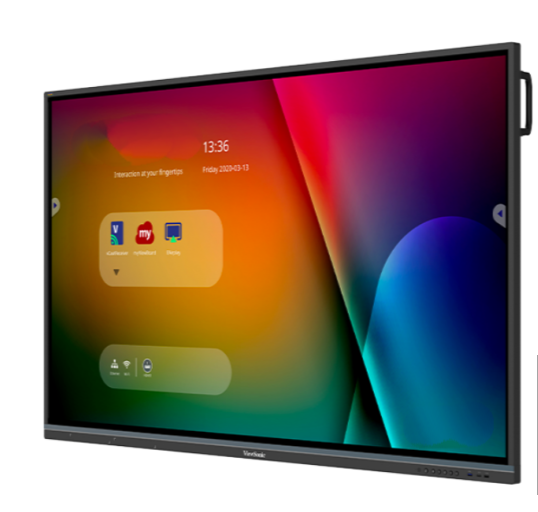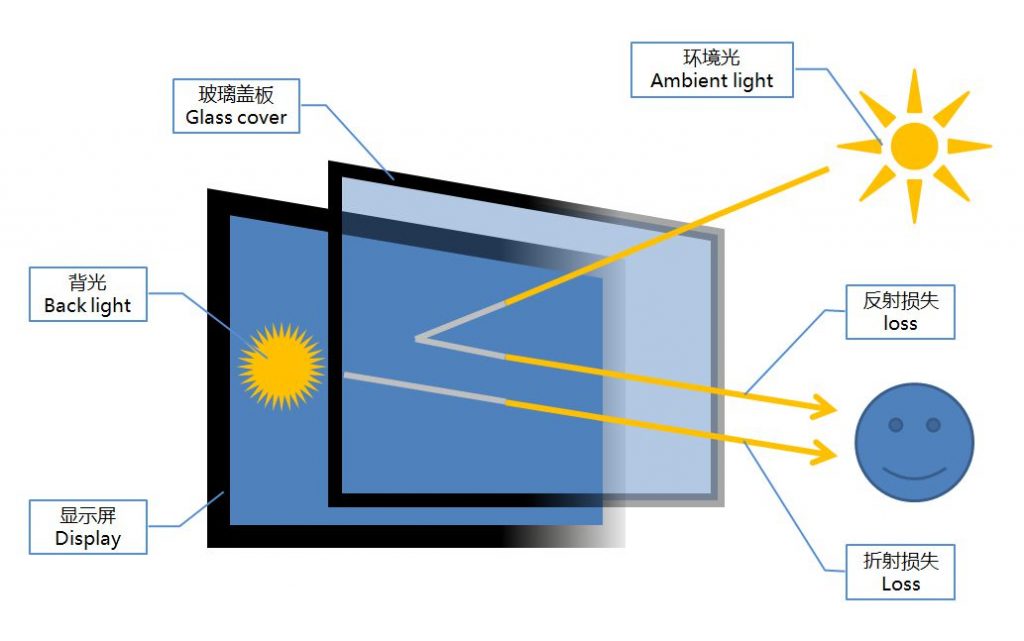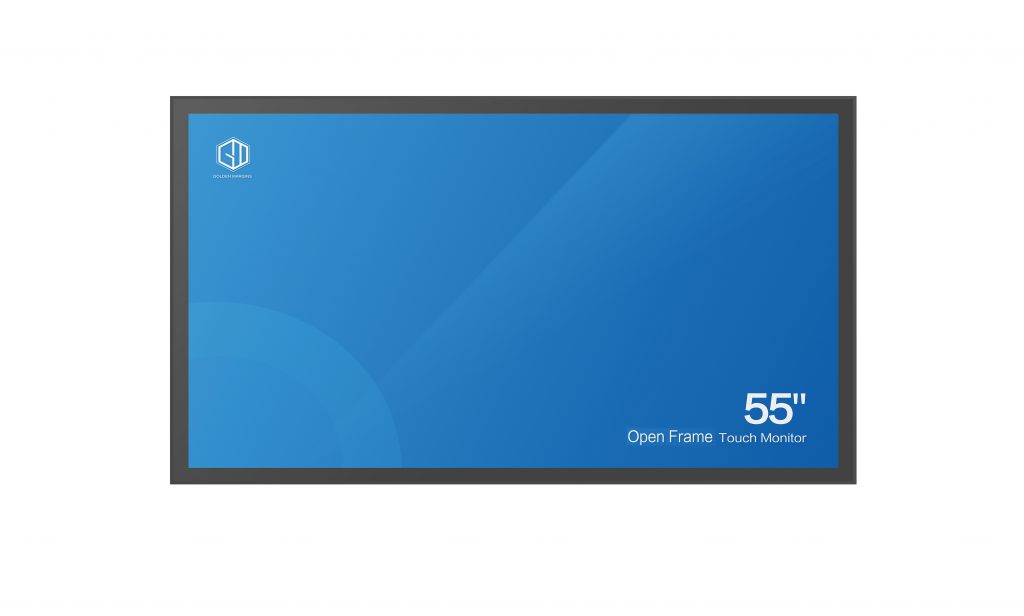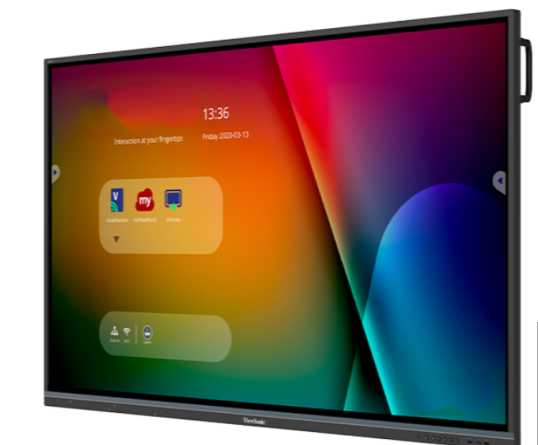Transforming the Classroom Experience with Interactive Flat Panel Displays
It is no secret that technology has transformed the classroom experience for students. But what about teachers? Teachers are now able to engage their students in new and exciting ways that help them learn more effectively. One such tool is the interactive flat panel display. This device, similar to a television but with touchscreen capabilities, can be used to create a technocentric classroom that more closely resembles the world that awaits students when they enter adulthood. Interactive displays are easy to use and provide a fun learning environment for students of all ages. In this blog post, we will discuss the benefits of using interactive flat panels in the classroom and how they can improve student engagement and academic performance.

The benefits of using interactive flat panels in the classroom.
Interactive flat panels (IFPs) are becoming increasingly popular in classrooms as they offer a number of advantages over traditional chalkboards or whiteboards. IFPs are essentially large touch-screen displays that can be used for a variety of purposes, from displaying multimedia content to running interactive applications. Here are just a few of the benefits that IFPs can offer in the classroom:
1. Improved Engagement and Interactivity
One of the biggest advantages of IFPs is that they can help to improve engagement and interactivity in the classroom. Traditional chalkboards or whiteboards can be quite static, which can make it difficult to keep students’ attention focused on the lesson. With an IFP, teachers can easily display dynamic content such as videos, animations, or simulations that can help to hold students’ attention and keep them engaged in the lesson. Additionally, IFPs allow students to directly interact with the content through touch, which can further improve their understanding and retention of the material.
2. Enhanced Collaboration
Another great benefit of IFPs is that they can enhance collaboration among students. With an IFP, multiple students can work together on projects or assignments using the same screen. This can be particularly beneficial for group work or brainstorming sessions. Additionally, IFPs make it easy for students to share their work with the class by simply projecting their screen onto the IFP for all to see.
3. Increased Accessibility
IFPs can also help to increase accessibility for all students, including those with special needs. For example, IFPs can be used to display text in large font sizes or with high-contrast colors that can be easier for some students to read. Additionally, many IFPs come with built-in accessibility features such as text-to-speech or screen magnifiers that can further assist students with special needs.
4. More Flexibility and Creativity
IFPs also offer more flexibility and creativity when it comes to lesson planning and delivery. With an IFP, teachers have the ability to easily incorporate multimedia content into their lessons, which can add an extra level of interest and engagement for students. Additionally, IFPs provide a blank canvas that teachers can use to get creative with their lessons – there are really no limits to what you can do!
5. Cost Savings
Finally, one of the most appealing benefits of IFPs is that they can help schools save money in the long run. Traditional chalkboards and whiteboards require regular maintenance and replacement due to wear and tear, but IFPs are designed to last for many years with minimal upkeep required. Additionally, many schools are now choosing to purchase affordable subscription-based software packages that provide access to a wide range of educational content and applications – something that would not be possible with traditional chalkboards or whiteboards.
How interactive flat panels can improve student engagement and academic performance?
Interactive flat panels are quickly becoming a staple in school classrooms because of the many advantages they offer over traditional chalkboards. One of the most significant advantages is the way they can improve student engagement and academic performance.
It is well-documented that students learn better when they are actively engaged in the material, rather than passively listening to a lecture. With an interactive flat panel, students can be involved in every lesson. They can write, draw, and play games together, which helps them to better understand the material. Additionally, research has shown that students who are actively engaged in their learning are more likely to retain information and perform better on tests.
Another benefit of using an interactive flat panel is that it allows students to work together regardless of location. With the right tools, students can huddle up and work on projects together, even if they are not in the same classroom. This is especially useful for distance learning or for students who are unable to physically attend school.

Pocket-sized participation is also possible with the right mobile app. Myviewboard Companion is a powerful mobile app that gives users access to all the features of an interactive flat panel, even if they are not in the same room. This is perfect for students who need to participate in class but cannot be there in person.
Overall, interactive flat panels offer a number of benefits that can improve student engagement and academic performance. With the right tools, students can be involved in every lesson, work together regardless of location, and have access to resources at their fingertips. These advantages make interactive flat panels a valuable addition to any classroom.
Cost and Administrative Benefits of Using Interactive Flat Panel in a classroom
Interactive Flat Panel Displays (IFPDs) offer a number of advantages over traditional projector and Smart Board setups in the classroom. In terms of cost, IFPDs are typically cheaper to install and maintain over the long run. They also consume less energy, which can further reduce costs. Typically it consumes ⅓ of the energy that is consumed by a Smart Board and Projector Setup.
From an administrative standpoint, IFPDs are incredibly user-friendly and easy to manage. Many models come with integrated software that makes it simple for teachers to access relevant content quickly, which simplifies the learning process for students. Additionally, the centralized management system allows IT teams to easily monitor and maintain multiple displays from a single point of control.
In addition to the cost savings, IFPDs offer a number of administrative benefits. For example, teachers can easily manage their lessons with an IFPD as they can access content from multiple sources and platforms simultaneously. This allows for more efficient classroom management and better student engagement
IFPs also provides administrators with greater control over how classrooms are used. With the right software and hardware, administrators can monitor student usage of the IFPD in real-time. This allows them to ensure that students are staying on task and prevents misuse of classroom resources.
The fun learning environment that interactive flat panels provide.
Interactive flat panels provide a fun learning environment for students of all ages. By allowing users to control the content on the screen, they can tailor their learning experience to best suit their needs. Additionally, the use of touch-based controls and gestures makes interacting with these types of displays much more intuitive and natural than traditional methods such as mouse and keyboard.
One of the biggest advantages that interactive flat panels have over traditional displays is that they can be used in a variety of different settings. For example, they can be used in classrooms as a replacement for chalkboards or whiteboards. Additionally, they can be used in Labs or Corridors to facilitate collaboration between students.
Another great benefit of interactive flat panels is that they offer a level of flexibility that is simply not possible with more traditional display technologies. For instance, they can be mounted on walls or tables, or they can be placed in any number of different locations within a room. This allows users to create custom learning or working environments that best suit their needs. Additionally, many interactive flat panels come with built-in speakers and cameras, which further enhances their functionality.
Why more classrooms should be using interactive flat panels.
Interactive flat panels (IFPs) offer a wealth of advantages for today’s classrooms. IFPs are large, touch-sensitive displays that allow users to interact with digital content in a variety of ways. Here are just a few reasons why more classrooms should be using IFPs:
1. IFPs Enhance Student Engagement
Interactive flat panels are highly engaging, which can lead to improved student performance. IFPs promote active learning by allowing students to directly manipulate digital content. This hands-on approach can help students better retain information and concepts. Additionally, IFPs can capture students’ attention in a way that traditional whiteboards or chalkboards cannot. The use of rich media on IFPs – such as videos, images, and animations – can help hold students’ attention and keep them engaged in the lesson.
2. IFPs Facilitate Differentiated Instruction
Interactive flat panels can be used to facilitate differentiated instruction, providing an instructional delivery method that meets the needs of all learners. Teachers can use IFPs to create custom content and lessons that target individual students’ needs. Additionally, IFPs offer a variety of built-in features – such as the ability to highlight text, draw directly on the screen, or record audio/video notes – that can further support differentiated instruction.
3. IFPs Promote Collaborative Learning
Interactive flat panels promote collaborative learning by allowing multiple users to interact with the same digital content at the same time. Students can work together on projects, share ideas and resources, and provide real-time feedback using the features of the IFP. Additionally, teachers can use IFPs to facilitate whole-class collaboration and discussion. For example, teachers can project an image or document onto the IFP and then have students annotate it using the built-in tools. This type of collaborative activity can help deepen student understanding of concepts while also developing important 21st-century skills such as communication and collaboration.
Golden Margins –Entire Range of Touchscreen Products


We hope you found these touchscreen or panel PC fundamentals informative. Goldenmargins offers a broad selection of Industrial Touchscreen Monitors and Touch Panel PCs in various sizes and configurations, including medical touch screens, sunlight-readable touch screens, open-frame touch screens, and waterproof touch panels, as well as other unique touch screen or panel PC designs. You can learn more about our services HERE or by calling us at +86 755 23191996 or sales@goldenmargins.com





